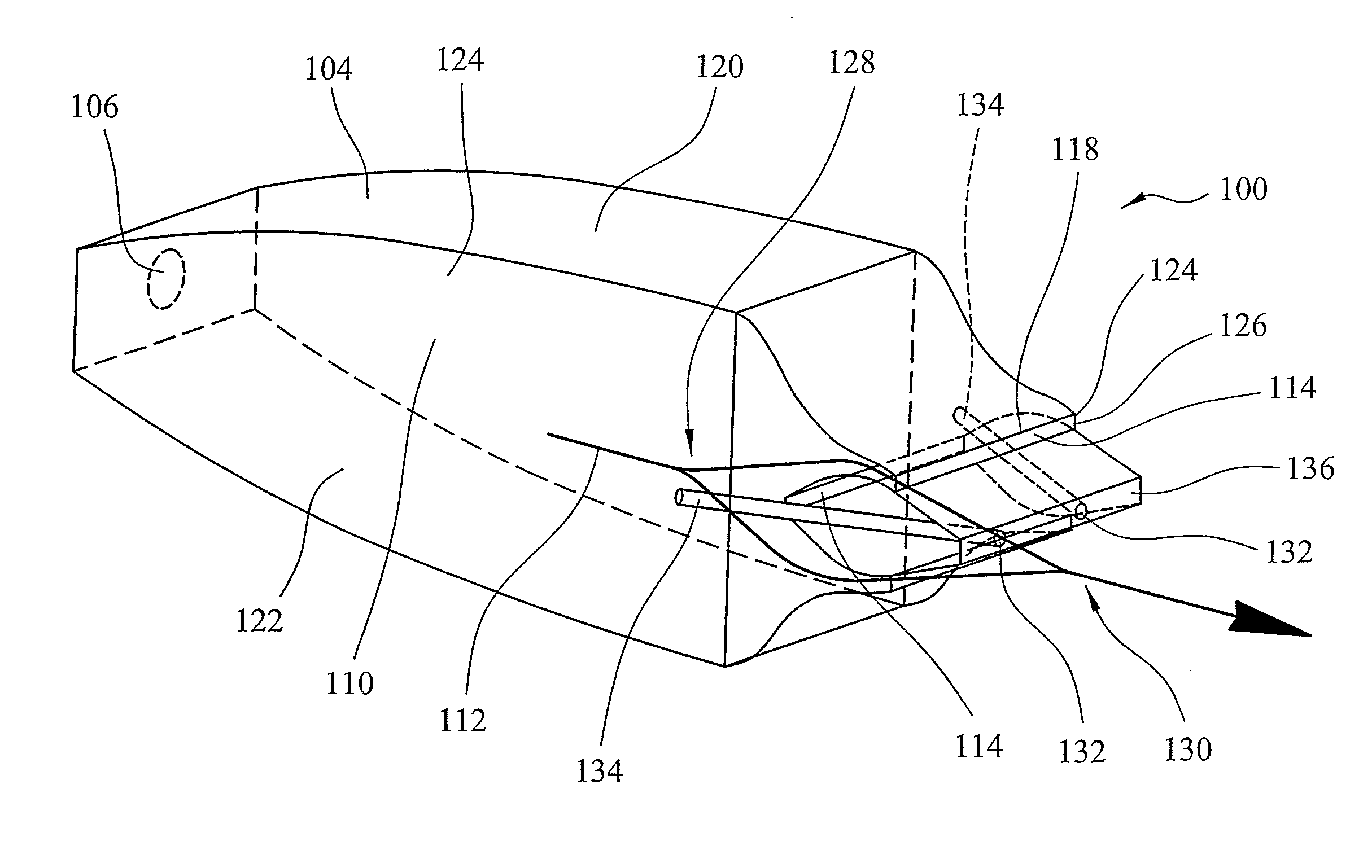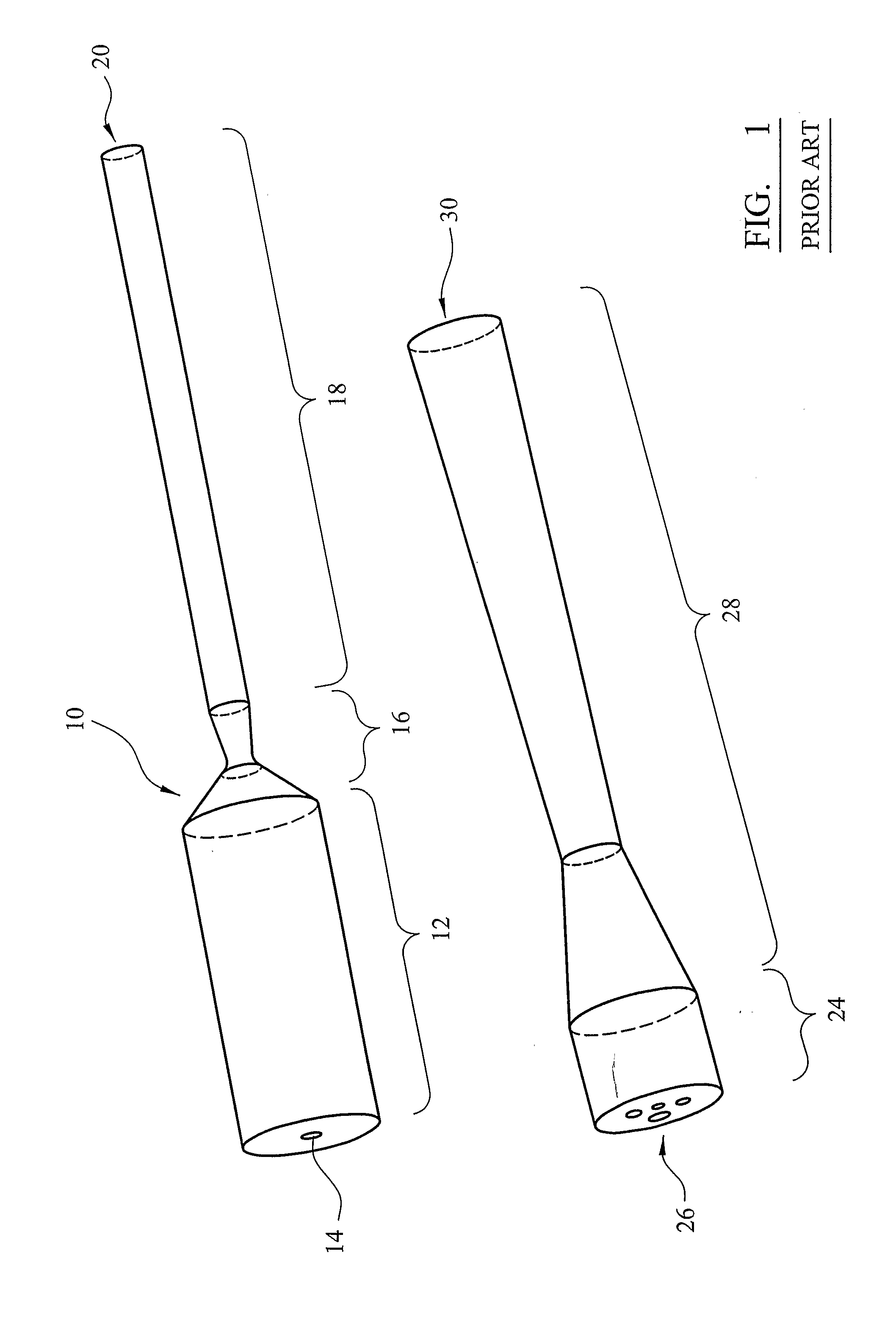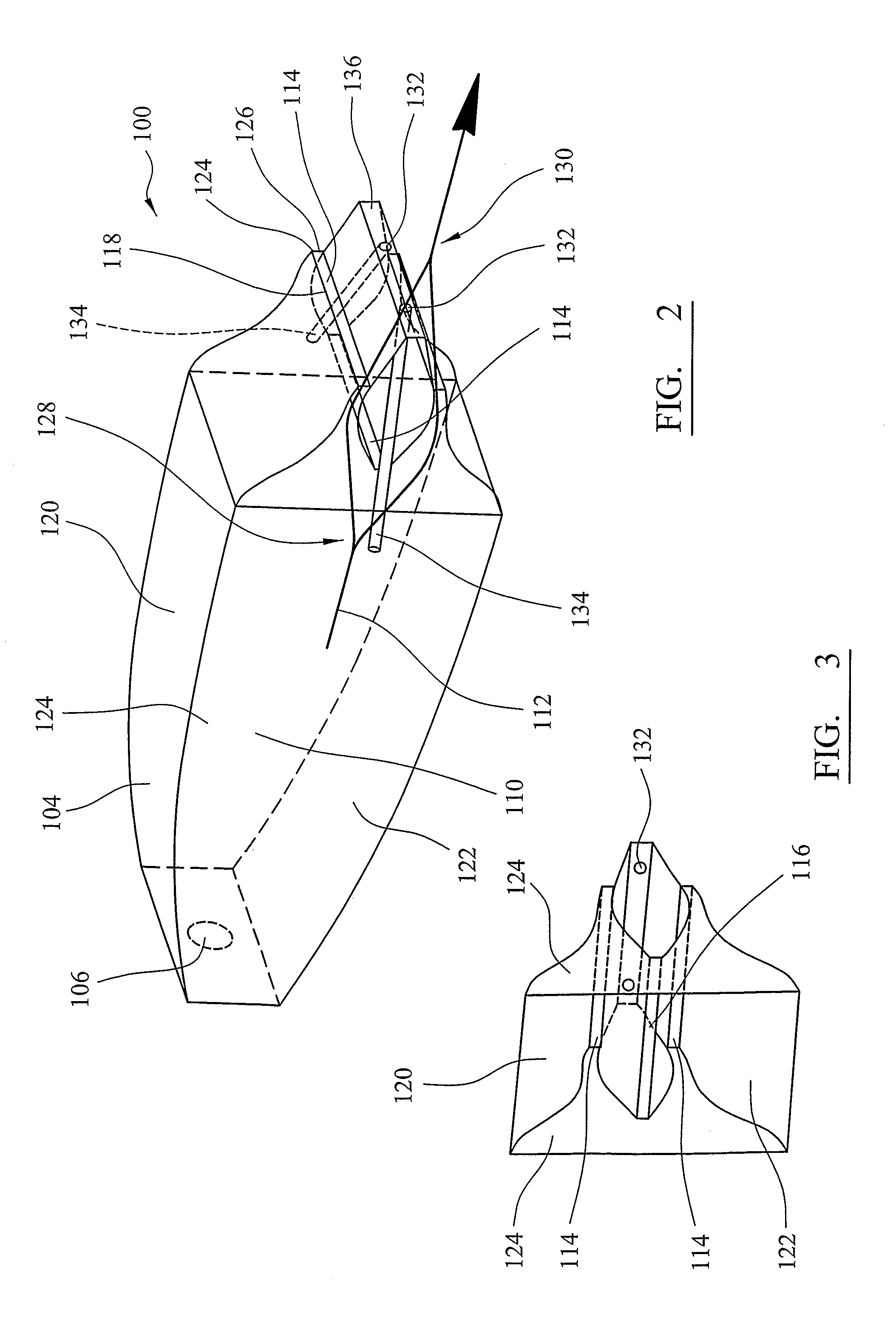Nozzle For A Thermal Spray Gun And Method Of Thermal Spraying
a technology of thermal spraying and nozzles, which is applied in the direction of liquid/solution decomposition chemical coatings, solid/suspension decomposition chemical coatings, pressure inorganic powder coatings, etc., can solve the problems of reducing spraying accuracy, reducing deposition efficiency, and reducing spraying accuracy, so as to reduce the loss of energy/temperature of powder particles, reduce the loss of energy, and increase the stability of the jet
- Summary
- Abstract
- Description
- Claims
- Application Information
AI Technical Summary
Benefits of technology
Problems solved by technology
Method used
Image
Examples
Embodiment Construction
[0051]Referring to FIGS. 2 to 5, a nozzle 100 for a thermal spray gun 102 has a combustion chamber 104. An inlet 106 introduces fuel into the combustion chamber from a fuel supply pipe 108. The fuel is burnt in a combustion zone 110 and a stream of combustion gases that leave the combustion chamber 104 through exhausts 114. The nozzle 100 also includes diverging means, in the form of aerospike 116, that is located partially within the combustion chamber. The aerospike 116, in combination with edges 118 of the curved top and bottom walls 120 and 122 and side walls 124 with edge 126, form exhausts 114. It should be noted that the side wall, opposing the side wall 124 shown in FIG. 2, is not illustrated in either FIG. 2 or FIG. 5, but is partially present in FIG. 3.
[0052]The presence of the aerospike 116 between exhausts 114 causes the stream 112 of combustion gases to diverge, as indicated at 128, and to converge as indicated at 130.
[0053]The nozzle 100 also has coating material inlet...
PUM
| Property | Measurement | Unit |
|---|---|---|
| flame temperature | aaaaa | aaaaa |
| temperature | aaaaa | aaaaa |
| velocity | aaaaa | aaaaa |
Abstract
Description
Claims
Application Information
 Login to View More
Login to View More - R&D
- Intellectual Property
- Life Sciences
- Materials
- Tech Scout
- Unparalleled Data Quality
- Higher Quality Content
- 60% Fewer Hallucinations
Browse by: Latest US Patents, China's latest patents, Technical Efficacy Thesaurus, Application Domain, Technology Topic, Popular Technical Reports.
© 2025 PatSnap. All rights reserved.Legal|Privacy policy|Modern Slavery Act Transparency Statement|Sitemap|About US| Contact US: help@patsnap.com



